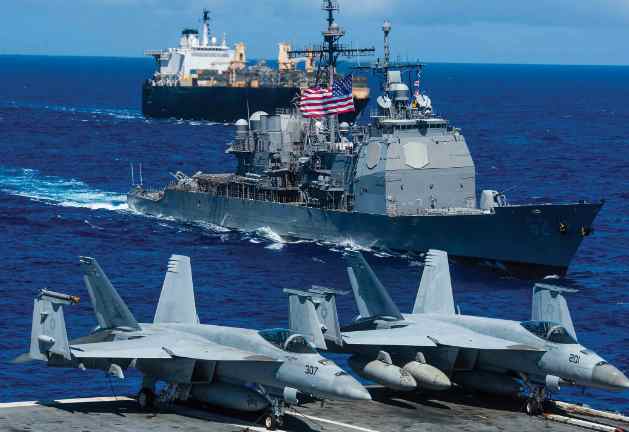 NOAA Fisheries is seeking comments for a proposed rule requiring the United States Navy to implement protective measures during activities at their Northwest training and testing study area in the state waters off Alaska, Washington, Oregon, and northern California to reduce the chances of harming marine mammals.
NOAA Fisheries is seeking comments for a proposed rule requiring the United States Navy to implement protective measures during activities at their Northwest training and testing study area in the state waters off Alaska, Washington, Oregon, and northern California to reduce the chances of harming marine mammals.
The Navy has requested an authorization under the Marine Mammal Protection Act because the sound generated by mid-frequency active sonar and the pressure generated by detonating explosives might affect the behavior of some marine mammals, due to a temporary loss of their hearing sensitivity or other injury.
The Navy is currently operating under rules issued in 2010 and 2011. Since then, the Navy has submitted annual monitoring and exercise reports. They are required to renew their MMPA authorization every five years.
Under the authorization, the Navy would have to follow mitigation measures to minimize effects on marine mammals, including:
- Establishing marine mammal mitigation zones around each vessel using sonar;
- Using observers to shut down sonar operations if marine mammals are seen within designated mitigation zones;
- Using mitigation zones to ensure that explosives are not detonated when animals are detected within a certain distance; and
- Implementing a stranding response plan that includes a training shutdown provision in certain circumstances, and allows for the Navy to contribute in-kind services to NOAA Fisheries if the agency has to conduct a stranding response and investigation.
No deaths of marine mammals are anticipated or authorized, and the measures included in the proposed rule should minimize the potential for injury and significantly reduce the number of marine mammals exposed to levels of sound likely to cause behavioral reactions and temporary loss of hearing sensitivity.
Additionally, the proposed rule includes an adaptive management component that requires the Navy and NOAA Fisheries to meet yearly to discuss new science, Navy research and development, and Navy monitoring results to determine if modifications to mitigation or monitoring measures are appropriate.
NOAA Fisheries and the Navy have worked to develop a robust monitoring plan to use independent, experienced vessel-based marine mammal observers (as well as Navy observers), and passive acoustic monitoring to help better understand how marine mammals respond to various levels of sound and to assess the effectiveness of mitigation measures.
Additionally, an integrated comprehensive monitoring plan developed by the Navy, with input from NOAA Fisheries, will better prioritize monitoring goals and standardize data-collection methods across all U.S. range complexes.
The proposed rulemaking and the Navy’s application are available at the following website:https://www.nmfs.noaa.gov/pr/permits/incidental.htm
NOAA Fisheries will accept comments for 45 days following publication of the notice. Comments should be addressed to:
Jolie Harrison, Permits and Conservation Division/Office of Protected Resources/National Marine Fisheries Service/1315 East-West Highway/Silver Spring MD 20910-3225
Electronic comments can be sent via the Federal eRulemaking Portal: www.regulations.gov, using the identifier 0648-BD69.
NOAA’s mission is to understand and predict changes in the Earth’s environment, from the depths of the ocean to the surface of the sun, and to conserve and manage our coastal and marine resources. Join us onFacebook: www.facebook.com/NOAA, Twitter and our other social media channels.







